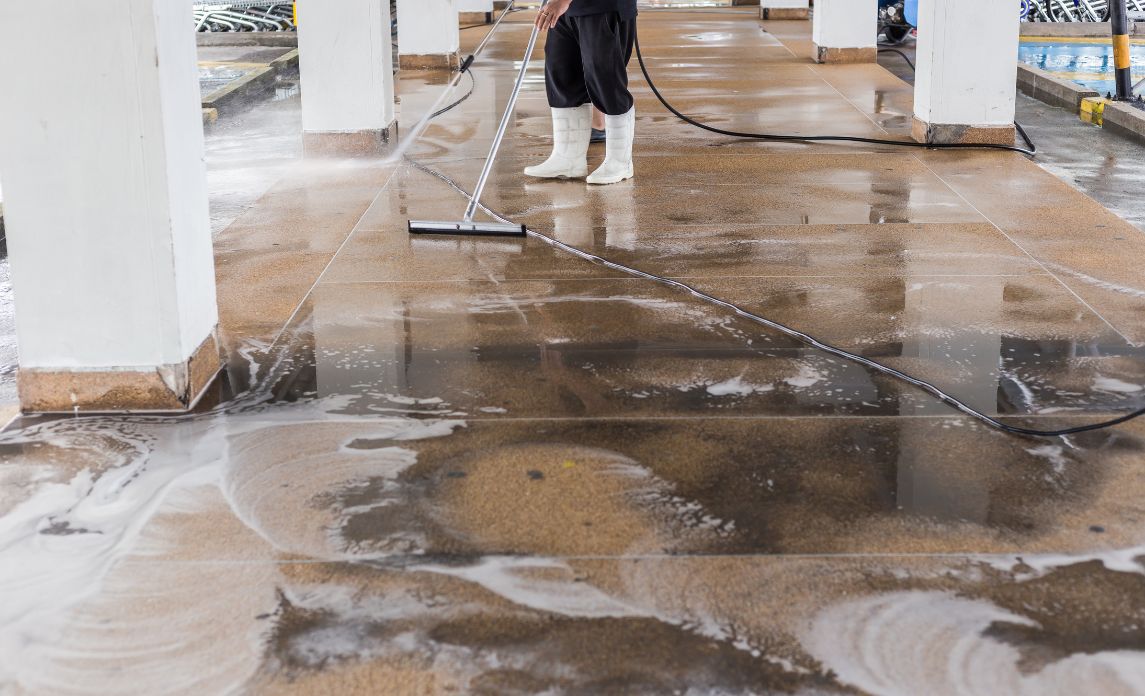There are many things that can cause water damage to a property. Some common culprits are weather disturbances, such as heavy rain and cyclones; earthquakes and wildfires may also indirectly cause water damage, as these disasters can damage a building’s structure.
Water damage may also be caused by structural or plumbing issues, appliance malfunctions, poor construction, and condensation buildup.
If not addressed promptly and effectively, water damage can wreak havoc on a property. It can weaken the foundations of a building, ruin electrical systems, and cause mould growth, among others.
In this article, we’ll discuss how to thoroughly clean your property after water damage and how to prevent incidents in the future.
How to Clean Up and Restore Water Damage
No matter how small the damage, cleaning up and restoring a water-damaged home or office can feel overwhelming. To help lessen the stress, here’s a step-by-step process you can follow:
Act Swiftly and Safely
The moment you discover any form of water damage, safety should be the priority. Ensure the property is safe to enter, turn off electricity and gas if necessary (and if it’s safe to do so), and wear protective gear such as gloves, masks, and boots to avoid exposure to contaminants.
Assess and Document Everything
The next step is to evaluate the extent of the water damage and document it with photographs or videos before starting cleanup and restoration efforts. This documentation will be valuable for insurance claims.
Then, identify the source of the water and categorise it to determine the appropriate cleanup approach. Depending on the source or type of the water (e.g., clean water from the pipes, flood water, etc.), cleanup procedures may vary.
Water Extraction, Drying, and Disinfection
To start the water damage clean up process, you have to first remove standing water using pumps, wet/dry vacuums, or mops. The quicker water is extracted, the less damage it will cause.
For drying you can make use of industrial-grade dehumidifiers, fans, and air movers to dry out affected areas. This will help prevent mould growth and structural damage. Lastly, disinfect and clean surfaces that came into contact with water. Use appropriate cleaning agents and disinfectants to sanitise affected areas.
Professional Assistance
For extensive damage or if you're unsure about the cleanup process, consider hiring professional cleaners like Crewcare and water damage restoration services. These professionals have the expertise, equipment, and experience to handle large-scale restoration effectively.
Salvage or Repair Items, When Possible
If you can and when possible, salvage personal belongings and items. Do this as quickly as possible to prevent further damage. After washing and drying them, apply the suitable disinfectant to remove any traces of germs.
In many instances, it’s still possible to repair or replace damaged building materials, such as drywall, insulation, flooring, and structural elements. Have the repairs done professionally to ensure quality and longevity.
For items that cannot be salvaged or cleaned, dispose of them properly as soon as you can. If they can’t be removed from the property immediately, keep them somewhere that won’t promote the growth of mould.
Mould Prevention
If you aren’t able to attend to the water-damaged property ASAP, the first thing to do once you return is to check for signs of mould growth and take the necessary steps to prevent its development. Remove any mould-infested materials and use mould inhibitors as needed.
Other Key Things to Remember
Some other things to take note of in handling water damage cleanup include the following:
- Contact your insurer. Notify your insurance company about the water damage as soon as possible. As mentioned, document the damage through photos as videos; also, keep records of all communication with your insurance provider.
- Prevent future water damage. Once the cleanup is complete, take proactive measures to prevent future water damage. Conduct regular inspections, maintain gutters, roofs, and plumbing systems, and upgrade where necessary.
- Be thorough in your inspections. There may be hidden water damage in your home or office. So, after the cleanup, look for leaks, cracks, and signs of water damage in roofs, ceilings, walls, foundations, and plumbing systems.
- Maintain water pipes and gutters. Clean gutters and downspouts regularly to ensure proper drainage and avoid water buildup on roofs or around the foundation.
- Proper roof maintenance. Inspect the roof for damaged or missing shingles, flashing, or any other vulnerabilities. Also, repair or replace damaged roofing materials promptly.
- Check for plumbing leaks. Routinely inspect plumbing fixtures, pipes, and appliances for leaks, corrosion, or damage. Fix any issues immediately to prevent water damage.
- Upgrade plumbing systems. If possible, upgrade to newer plumbing fixtures and appliances that are more water-efficient and less prone to leaks.
- Proper insulation and ventilation. One cause of water damage is moisture accumulation. To prevent this, ensure proper insulation in attics, walls, and crawl spaces.
- Keep appliances in good shape. Maintain appliances like washing machines, dishwashers, and water heaters by checking hoses, connections, and seals for leaks or wear.
- Install a pressure regulator. You may be inadvertently causing unnecessary stress on your water pipes due to high pressure. A pressure regulator can help maintain a safe water pressure level and prevent leaks.
- Monitor your water bill. An unexpected increase in water usage or bills could indicate a hidden leak, which you should address promptly.
Water damage can be a devastating experience. However, with swift action, thorough cleanup, and preventive measures, you can minimise losses and restore your property as effectively as possible.
It’s also important to note that preparation and proactive maintenance are key to preventing future water-related issues and safeguarding your property.


